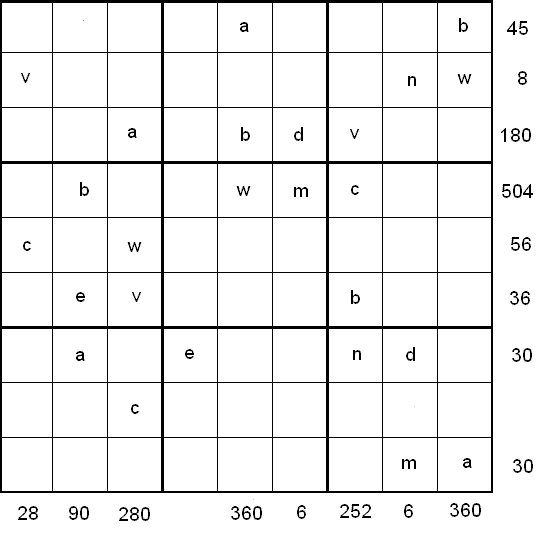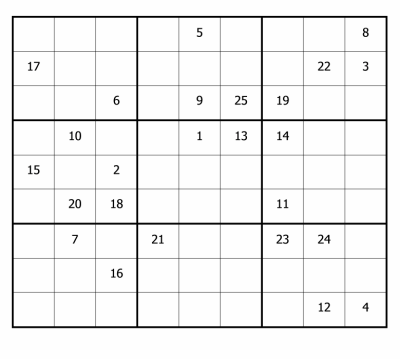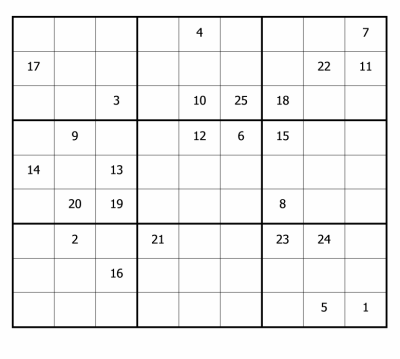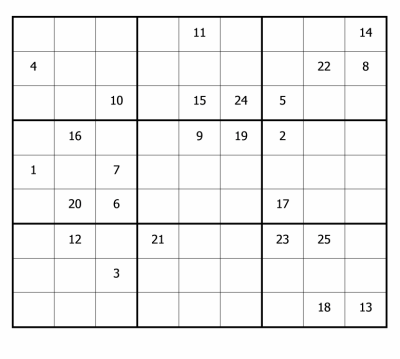Or search by topic
Number and algebra
Geometry and measure
Probability and statistics
Working mathematically
Advanced mathematics
For younger learners
LCM Sudoku



LCM Sudoku printable worksheet

Rules of LCM Sudoku
Alison worked out the value of the letters in the following order: w, a, b, m, c, v, e, n, d
Here is the complete route she took through the lettered cells:

Charlie worked out the value of the letters in the following order: a, m, b, w, c, v, e, n, d
Here is the complete route he took through the lettered cells:

Steve worked out the value of the letters in the following order: c, v, w, a, b, m, e, n, d
Here is the complete route he took through the lettered cells:

Can you work out the values of the nine letters in the same order that they did?
Can you work out the values of the letters in any other orders?
After finding the values of all the variables, you can solve the rest of the Sudoku using standard techniques and strategies.
After completing this Sudoku you may like to have a go at LCM Sudoku II
Thank you to Henry Kwok for devising this Sudoku.
Related Collections
You may also like
DOTS Division
Take any pair of two digit numbers x=ab and y=cd where, without loss of generality, ab > cd . Form two 4 digit numbers r=abcd and s=cdab and calculate: {r^2 - s^2} /{x^2 - y^2}.

